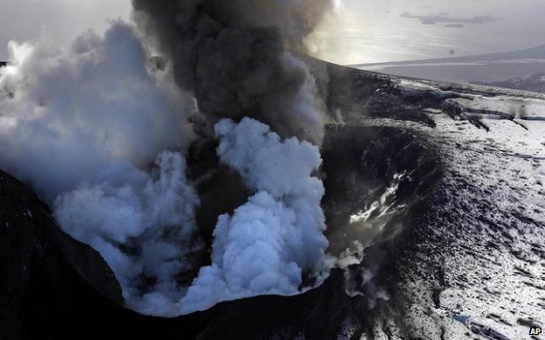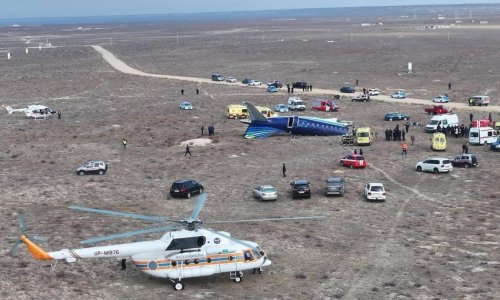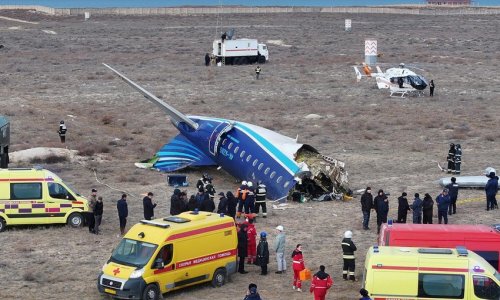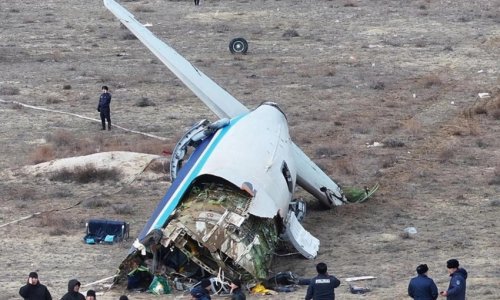The magma from Iceland's Bardarbunga volcano could be moving towards another large volcanic system.
Data recorded by a team from the University of Cambridge suggests that 50 million cubic metres of molten rock has moved in the last 24 hours.
If it continues on a northern trajectory it could feed into the Askja volcanic system, potentially triggering a large eruption.
Prof Bob White said: "It's headed straight for it."
But he cautioned that volcanoes were hard to predict.
"It's moving at about 4km a day towards Askja, and if it keeps going it will get there in a few days," he told BBC News.
"We know there is a lot of molten rock sitting under the ground beneath Askja, which is a major volcanic system. If this molten rock hits that, we know it is likely to trigger it to erupt.
"But who knows, it may just stop. It is still at 5km-depth, and it is possible it could freeze there and not a lot more will happen. That is perfectly plausible."
The Cambridge seismology group has been monitoring volcanoes in the area since 2006 with more than 70 seismometers.
Over the last 10 days, they have detected large numbers of earthquakes, which have been moving north over a distance of about 40km. They are caused as magma flows beneath the ground, cracking the rocks as it moves.
On Tuesday morning the Bardarbunga volcano was hit by a magnitude 5.7 earthquake, the largest since tremors began in the area last week.
The team estimates that about 350 million cubic metres of magma have moved in this period, which is about twice the amount of molten rock that was blasted into the air during Iceland's Eyjafjallajokull eruption in 2010.
Prof Simon Redfern, an earth scientist from the University of Cambridge, said: "It is a huge amount of magma, creating an enormous subterranean channel of molten rock."
He said that the dyke - the underground "plumbing system" that carries the molten rock - could join up with other underground fissures, creating a large network of magma.
Prof White added that several scenarios were possible.
"One is that it erupts under the glacier," he said.
"That is bad news because this kind of eruption can drive the big ash clouds that can go up 35,000-40,000ft, and that is what happened in 2010 with Eyjafjallajokull."
However that scenario is looking less likely because the magma is moving beyond the thick ice of the glacier into shallower terrain beyond.
If it erupts in this region, with less ice-cover, it could create "fire-fountains" - spectacular plumes of lava, which can be dangerous, but carry less ash.
Prof White said: "The third scenario is that it keeps going north, it keeps feeding molten rock and it hits the Askja system and triggers that - then goodness knows what will happen. It could make a lot of disruptive ash all over Iceland."
The last time that the Askja volcano had a major eruption was in 1875. The ash-fall caused crops to fail and killed livestock, triggering a wave of migration away from the north east of Iceland.
'Curtain of fire'
Commenting on the team's findings Prof David Rothery, from the Open University, said that while the magma could head for Askja, it may also change its route.
"Magma could be heading along a dyke towards Askja, which last erupted in 1961, or it might bypass it and be injected northwards along a fissure that passes to the east of Askja, where there have been several earthquakes in the past week," he told BBC News.
"In neither case is an eruption inevitable. Many dykes never reach the surface.
"An eruption along a dyke could be a spectacular affair, beginning as a 'curtain of fire' feeding an expanding lava field. That sort of eruption is most unlikely to produce a column of fine ash that would get high enough to be a hazard to more than a local aviation.
"I would anticipate a bigger problem if an eruption of stored, gas-rich magma were to begin at Bardarbunga itself, but even that would cause major disruption to air travel only if it was powerful enough to reach about 20 km high and if the wind carried the ash southeast over the UK and mainland Europe."
On Saturday, Iceland raised its level of alert to the aviation industry to red, warning of an imminent eruption, but then lowered it on Sunday to its second-highest level, orange.
Airspace over the site has been closed, but all Icelandic airports currently remain open, authorities say.
The Eyjafjallajokull eruption in April 2010 caused the largest closure of European airspace since World War Two, with losses estimated at between 1.5bn and 2.5bn euros (£1.3bn-2.2bn).
However since the eruption, the Civil Aviation Authority has relaxed its rules to allow planes to fly in areas with a low density of volcanic ash.
(BBC News)
Bakudaily.Az











